Ginger Tea: A Natural Remedy for Period Bloating – An Indian Youth’s Guide
Menstrual cycles can be challenging, with cramps, mood swings, and the infamous bloating making it hard to function at your best.
If you’re an Indian youth juggling studies, work, and social commitments, the added discomfort of period bloating can feel like an unwelcome guest. But what if the solution lies in your kitchen?
According to age-old wisdom—something our mothers have always known—ginger tea is a simple, effective remedy for easing period bloating.
This blog delves into why ginger tea is a go-to solution for menstrual bloating and how it aligns with the lifestyle of Indian youth. Let’s explore how this golden elixir can make your period days a little easier.
Understanding Period Bloating
Period bloating occurs due to hormonal fluctuations, particularly increased levels of estrogen and progesterone. These hormones cause water retention, which leads to a feeling of puffiness or tightness, especially around the abdomen.
While bloating is a normal part of the menstrual cycle, it can be uncomfortable and frustrating.
Why Do Indian Youth Face More Challenges?
As a young Indian, you may already have a hectic lifestyle, balancing academics, work, or other responsibilities. Add to this the cultural expectations and dietary habits that sometimes lean heavily on processed foods, salt, or caffeine—all of which can exacerbate bloating.
Furthermore, in many Indian households, discussing menstruation with male family members is still considered taboo. Some deeply ingrained cultural practices also restrict women during their menstrual cycle, such as not allowing them to enter the kitchen or sleep in a proper bed.
These emotionally distressing practices can, in turn, cause stress, leading to the release of cortisol, a stress hormone that worsens physical discomfort, including bloating.
This is where natural remedies like ginger tea can make a significant difference.
Why Ginger Tea Works Wonders for Period Bloating
1. Anti-inflammatory Properties
Ginger contains powerful anti-inflammatory compounds called gingerols and shogaols. These help reduce the inflammation in the gut, relieving bloating and soothing abdominal discomfort.
2. Promotes Digestive Health
Bloating often stems from digestive issues like slow metabolism or gas buildup. Ginger tea stimulates the digestive enzymes, aiding in faster digestion and reducing gas.
3. Diuretic Effect
Ginger tea has mild diuretic properties that help flush out excess water from the body, reducing water retention and puffiness.
4. Hormonal Balance
Ginger may also play a role in regulating hormones, helping reduce the severity of period symptoms, including bloating, cramps, and mood swings.
5. Warmth and Comfort
A hot cup of ginger tea provides warmth and relaxation, which can ease period discomfort and elevate your mood during challenging days.
Ginger Tea for Period Bloating: Step-by-Step Approach with External Resources
Here’s how you can implement ginger tea as a remedy for period bloating, broken down into actionable steps. Additionally, external links provide deeper insights and credibility.
Step 1: Understand the Science Behind Ginger and Menstrual Health
Before diving into remedies, it’s helpful to understand why ginger is effective for bloating and menstrual discomfort. Research confirms its anti-inflammatory, digestive, and hormone-regulating properties.
External Resources:
Step 2: Gather Ingredients
Head to your kitchen or a local grocery store to gather the following ingredients:
- Fresh ginger root
- Water
- Optional: honey, lemon, or additional spices like cardamom
External Resources:
- BBC Good Food: Why Fresh Ginger Is Better Than Powder
- Times of India: Ginger Benefits in Indian Cooking
Step 3: Prepare Ginger Tea
Follow this quick recipe:
- Boil 2 cups of water in a pan.
- Grate or thinly slice 1-2 inches of fresh ginger.
- Add the ginger to the boiling water and let it simmer for 5-7 minutes.
- Strain the tea into a cup.
- Add a teaspoon of honey or a squeeze of lemon for extra flavor.
External Resources:
Step 4: Drink Responsibly
Consume ginger tea once or twice a day during your menstrual cycle. Avoid drinking excessive amounts, as it can lead to acidity or heartburn in some individuals.
External Resources:
Step 5: Pair Ginger Tea with Lifestyle Adjustments
For maximum relief, complement ginger tea with:
- Hydration: Drink at least 2-3 liters of water daily.
- Diet: Include fiber-rich foods and avoid salty snacks.
- Light Exercise: Try yoga or gentle stretching exercises.
External Resources:
Step 6: Monitor the Results
Keep track of how ginger tea affects your period symptoms over a few cycles. If the bloating significantly reduces, incorporate it into your routine. However, if symptoms persist, consult a healthcare provider.
External Resources:
- WebMD: When to See a Doctor for Menstrual Symptoms
- National Library of Medicine: Gut Health and Hormonal Cycles

Quick Overview of the Steps to Use Ginger Tea for Period Bloating
- Understand the Science Behind Ginger
Ginger’s anti-inflammatory and digestive properties make it effective for easing period bloating. Its ability to regulate hormones also helps reduce discomfort during your menstrual cycle. - Gather the Ingredients
You’ll need fresh ginger root, water, and optional ingredients like honey, lemon, or cardamom for added flavor. - Prepare Ginger Tea
Boil 2 cups of water, add grated or sliced ginger, and let it simmer for 5-7 minutes. Strain into a cup and add honey or lemon if desired. - Drink Responsibly
Drink ginger tea once or twice a day during your period, but avoid overconsumption to prevent acidity or heartburn. - Pair with Lifestyle Adjustments
Stay hydrated, eat fiber-rich foods, and engage in light exercise like yoga to enhance the effectiveness of ginger tea in reducing bloating. - Monitor the Results
Track how your symptoms change over a few cycles. If bloating decreases, continue using ginger tea. If symptoms persist, consult a healthcare provider.
By following these simple steps, you can naturally manage period bloating and stay connected to time-tested, culturally rooted remedies.
When and How Often Should You Drink Ginger Tea?
For best results, drink ginger tea:
- 1-2 times a day during your menstrual cycle, especially when bloating is at its peak.
- First thing in the morning on an empty stomach or in the evening for a calming effect.
Avoid overconsumption, as too much ginger can sometimes cause heartburn or acidity.
The Cultural Connection: Wisdom Passed Down
In Indian households, natural remedies like ginger tea have been trusted for generations. Whether it’s curing a sore throat or soothing an upset stomach, ginger holds a revered place in Ayurvedic medicine. Our mothers and grandmothers often know the value of these age-old practices, even when modern science is just catching up.
As Indian youth, incorporating these traditional remedies into your lifestyle allows you to stay connected to your roots while addressing modern-day health challenges.
Why Ginger Tea Fits the Lifestyle of Indian Youth
- Quick and Easy to Prepare: With minimal ingredients and effort, ginger tea can be made in minutes, making it perfect for busy students or young professionals.
- Affordable and Accessible: Ginger is readily available in most Indian kitchens, making this remedy cost-effective and convenient.
- Customizable Flavor: You can experiment with add-ons like cardamom, cinnamon, or tulsi to suit your taste preferences.
- Holistic Wellness: Beyond bloating, ginger tea helps with cramps, nausea, and even stress—common challenges faced by Indian youth.
Additional Tips to Combat Period Bloating
While ginger tea is an excellent remedy, combining it with a healthy lifestyle can enhance its effects:
- Stay Hydrated: Drink plenty of water to prevent water retention.
- Reduce Salt Intake: Avoid salty snacks, which can worsen bloating.
- Eat Fiber-Rich Foods: Include fruits, vegetables, and whole grains in your diet to promote digestion.
- Exercise Gently: Yoga and light stretches can help alleviate bloating and cramps.
- Limit Caffeine: Replace coffee with herbal teas like ginger, chamomile, or peppermint during your period.
Conclusion: A Cup of Comfort
Ginger tea is more than just a beverage—it’s a cup of comfort, offering relief from period bloating and other menstrual woes. As an Indian youth navigating the complexities of modern life, embracing this traditional remedy can be a game-changer for your overall well-being.
The next time your period brings along bloating, listen to your mom’s advice and brew yourself a warm, soothing cup of ginger tea. It’s a small act of self-care that can make a big difference.
So, why wait? Give ginger tea a try and experience its magical benefits for yourself!
Disclaimer:
The information provided in this blog is intended for general informational purposes only. While ginger tea has been traditionally used in Ayurvedic medicine and has some proven health benefits, it should not be considered a substitute for professional medical advice, diagnosis, or treatment. Always consult with a healthcare provider before making any significant changes to your diet, especially if you have underlying health conditions or are taking medications.
Individual results may vary, and excessive consumption of ginger can lead to side effects such as heartburn or gastrointestinal discomfort. Please consume ginger tea in moderation.
The external resources linked in this article are for reference purposes and do not necessarily reflect the views or recommendations of the author.
-

How to Choose the Right Online MBA Program for You
The pursuit of an MBA degree has never been more accessible, thanks to the rapid growth of online education. However, with this abundance of choices comes the challenge of selecting the perfect program tailored to your career goals, personal commitments, and learning preferences. This guide offers a step-by-step approach to help you navigate the decision-making process effectively.
Introduction
Deciding to pursue an MBA is a pivotal step in your career journey. Online MBA programs provide the flexibility to learn from top institutions without relocating or pausing your professional life. However, not all online MBAs are created equal. This article will guide you in identifying programs that align with your aspirations while delivering quality education and value.
1. Understand the Importance of Accreditation
Accreditation is the cornerstone of any quality MBA program. It ensures that the institution meets specific educational standards and that your degree will be recognized by employers.
Key Accreditation Bodies
- AACSB (Association to Advance Collegiate Schools of Business): A prestigious accreditation held by top-tier business schools globally.
- AMBA (Association of MBAs): Primarily focused on postgraduate management programs.
- EQUIS (European Quality Improvement System): A European standard ensuring academic and professional rigor.
- Regional Accreditation: In the U.S., programs must also be regionally accredited to ensure legitimacy and facilitate credit transfers.
Tip: Verify a program’s accreditation through the school website or accrediting body directories to avoid non-recognized or diploma mills.
2. Define Your Selection Criteria
Choosing an online MBA involves evaluating multiple factors.
Reputation and Ranking
Refer to trusted rankings like:
- U.S. News & World Report
- Financial Times MBA Rankings
These rankings consider faculty quality, career outcomes, and alumni networks.
Curriculum and Specializations
Does the program offer courses aligned with your career goals? Popular specializations include:
- Finance
- Marketing
- Entrepreneurship
- Business Analytics
- Healthcare Management
For example, if you’re keen on entrepreneurship, prioritize programs with strong innovation and startup tracks.
3. Align with Personal Goals and Career Growth
Your online MBA should act as a launchpad for your career advancement.
Career Services and Networking Opportunities
- Look for programs with strong alumni networks and virtual networking events.
- Some schools offer career coaching or mentorship programs as part of their online offerings.
Employer Recognition
If you’re pursuing an MBA to climb the corporate ladder, verify if the program is respected in your industry. Engage with alumni or check LinkedIn profiles of graduates.
4. Evaluate Program Flexibility
Flexibility is one of the biggest advantages of online MBAs. Consider:
- Part-time vs. Full-time: Decide based on your work and life commitments.
- Synchronous vs. Asynchronous Learning:
- Synchronous: Real-time classes with live interactions.
- Asynchronous: Pre-recorded lectures for self-paced study.
- Modular Learning: Some programs allow students to pause their studies and resume later.
5. Technology and Support
Ensure the program is technologically robust:
- Access to user-friendly learning platforms (e.g., Blackboard, Canvas).
- Availability of 24/7 IT support to minimize disruptions.
- Tools like virtual whiteboards, discussion forums, and mobile app access for seamless learning.
6. Cost and ROI Analysis
An online MBA is a significant investment. Make sure you evaluate:
- Tuition Costs: Compare programs and look for scholarships or financial aid options.
- Hidden Costs: Factor in application fees, technology fees, and travel costs (if residencies are required).
- Return on Investment (ROI): Analyze post-MBA salary boosts and career prospects to ensure the program pays off in the long run.
Tip: Websites like Scholarship.com or the program’s financial aid office can help you explore funding options.
7. Explore Real-World Examples
Some highly regarded programs:
- Harvard Business School Online: Famous for its case-study method, offering real-world business problem-solving.
- Indiana University (Kelley School of Business): Blends flexible scheduling with high employer recognition.
- Arizona State University (W.P. Carey): Recognized for affordability and career development services.
Challenges of Online MBAs
Despite their benefits, online MBA programs face some challenges:
- Credibility Concerns: Although perceptions are improving, some employers still prefer traditional degrees.
- Technical Issues: Ensure stable internet access and proficiency with digital tools.
- Self-discipline: Online learning requires high levels of motivation and time management.
FAQs
1. Are online MBAs as valuable as traditional MBAs?
Yes, especially those from accredited institutions. Employers increasingly recognize the skills and knowledge gained from online programs.2. How can I balance an online MBA with a full-time job?
Choose part-time, asynchronous programs that allow flexible scheduling. Use time-management tools to stay on track.3. What industries value online MBAs?
Fields like consulting, tech, finance, and healthcare management highly value MBAs from reputed programs, regardless of the delivery mode.
Conclusion
Selecting the right online MBA program is about aligning your career aspirations with a program that offers quality, flexibility, and ROI. By considering accreditation, curriculum, flexibility, and career services, you can make an informed choice that sets you up for long-term success.
Call to Action
Subscribe to our newsletter for updates on business education trends and scholarship opportunities.
Explore our detailed guide on Top MBA Specializations to understand which path suits you best.
-

AI in Robotics: Pushing Boundaries and Creating New Possibilities
AI in Robotics: A Comprehensive Overview
Artificial Intelligence (AI) is revolutionizing robotics, equipping machines with the ability to perform tasks with unparalleled precision, efficiency, and autonomy. From manufacturing and healthcare to agriculture and logistics, AI-powered robots are reshaping industries and improving our daily lives. This comprehensive overview explores the key components, applications, benefits, challenges, and future trends of AI in robotics.
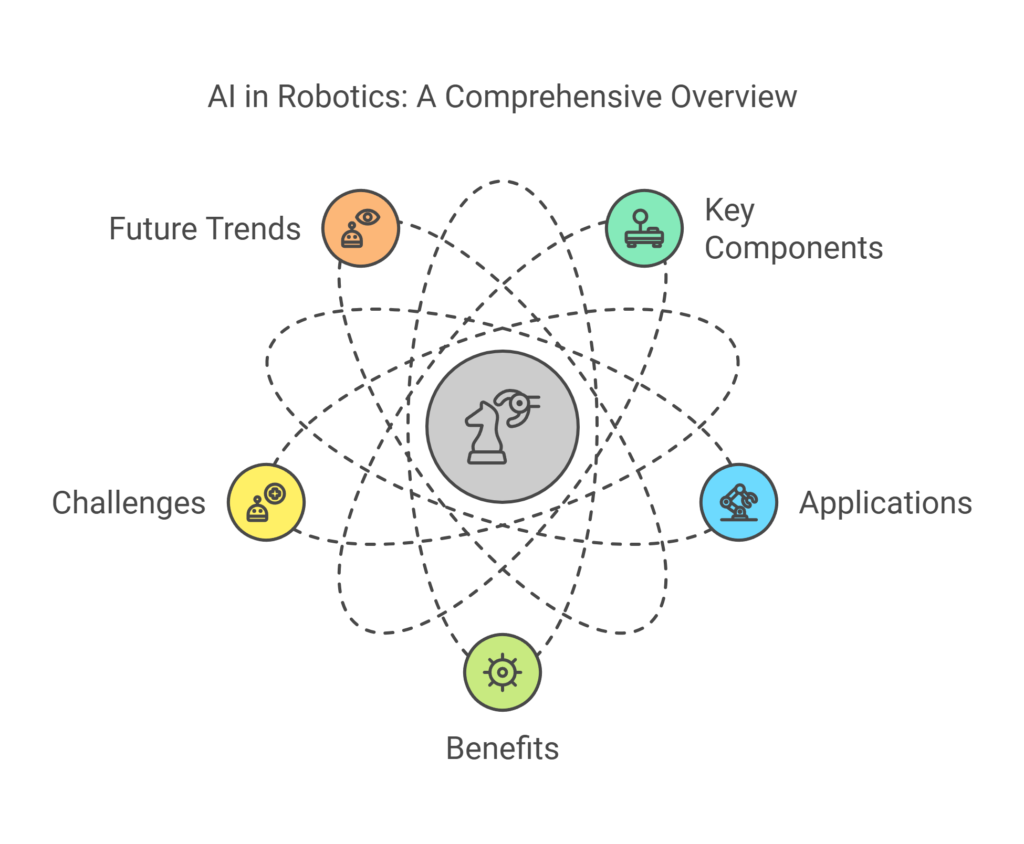
Understanding the Fundamentals of AI in Robotics
AI in robotics relies on several foundational technologies:
1. Machine Learning (ML)
ML enables robots to learn from data and improve performance over time without explicit programming. Common ML techniques in robotics include:
- Supervised Learning: Using labeled datasets to teach robots pattern recognition and predictive tasks.
- Unsupervised Learning: Identifying hidden structures in unlabeled data to understand patterns.
- Reinforcement Learning: Employing trial-and-error methods, where robots optimize actions based on rewards and punishments.
2. Computer Vision
Computer vision equips robots with the ability to “see” and interpret their environment. Using deep learning models like convolutional neural networks (CNNs), robots can identify objects, navigate spaces, and perform precision tasks, such as detecting defects in manufacturing or assisting in complex surgeries.
3. Natural Language Processing (NLP)
NLP allows robots to understand and respond to human language. This capability enhances human-robot interaction by enabling robots to execute voice commands and engage in meaningful conversations.
4. Sensor Fusion
Sensor fusion integrates data from multiple sensors—such as cameras, LiDAR, and ultrasonic sensors—to create a detailed understanding of the environment. This holistic approach allows robots to operate efficiently even in challenging and dynamic settings.
Key Components of AI-Powered Robots
AI-powered robots comprise several critical components:
- Sensors and Actuators: Sensors collect data from the robot’s surroundings, while actuators enable movement and interaction. Examples include cameras, LiDAR for vision, and robotic arms for physical manipulation.
- AI Algorithms and Software: These serve as the robot’s “brain,” processing sensory input, making decisions, and guiding actions. Popular tools include TensorFlow for AI modeling and Robot Operating System (ROS) for robot programming.
- Cloud Connectivity: Cloud platforms provide real-time data processing, updates, and coordination for robot fleets, facilitating advanced learning and scalability.
- Human-Robot Interaction (HRI): User-friendly interfaces ensure seamless collaboration, whether through touchscreens, voice commands, or gesture-based controls.

Applications of AI in Robotics Across Industries
1. Manufacturing
AI robots excel in tasks like:
- Automating assembly lines
- Performing quality inspections
- Collaborating with human workers as cobots (collaborative robots)
2. Healthcare
AI-powered robots are enhancing healthcare through:
- Surgical Assistance: Precision-guided robotic surgeries
- Patient Rehabilitation: Recovery aids for mobility and physical therapy
- Elder Care: Monitoring vitals, medication reminders, and companionship
3. Agriculture
AI robotics is driving smart farming:
- Autonomous tractors for planting and harvesting
- Drones for crop health monitoring
- Robots implementing precision farming to reduce waste
4. Logistics and Warehousing
Key innovations include:
- Automated guided vehicles (AGVs) for efficient material movement
- Robots for inventory management and last-mile delivery
5. Service Industry
Robots enhance customer service and operations by:
- Handling cleaning and maintenance
- Assisting customers in retail and hospitality
Benefits of AI in Robotics
The integration of AI into robotics offers numerous advantages:
- Enhanced Efficiency: Robots can work 24/7 with consistent output.
- Greater Precision: Tasks are performed with high accuracy, reducing errors.
- Improved Safety: Robots take on hazardous jobs, minimizing risks for humans.
- Cost Savings: Automation reduces labor costs and enhances predictive maintenance.
- Capability Expansion: Robots can tackle complex tasks that were once impossible for machines.
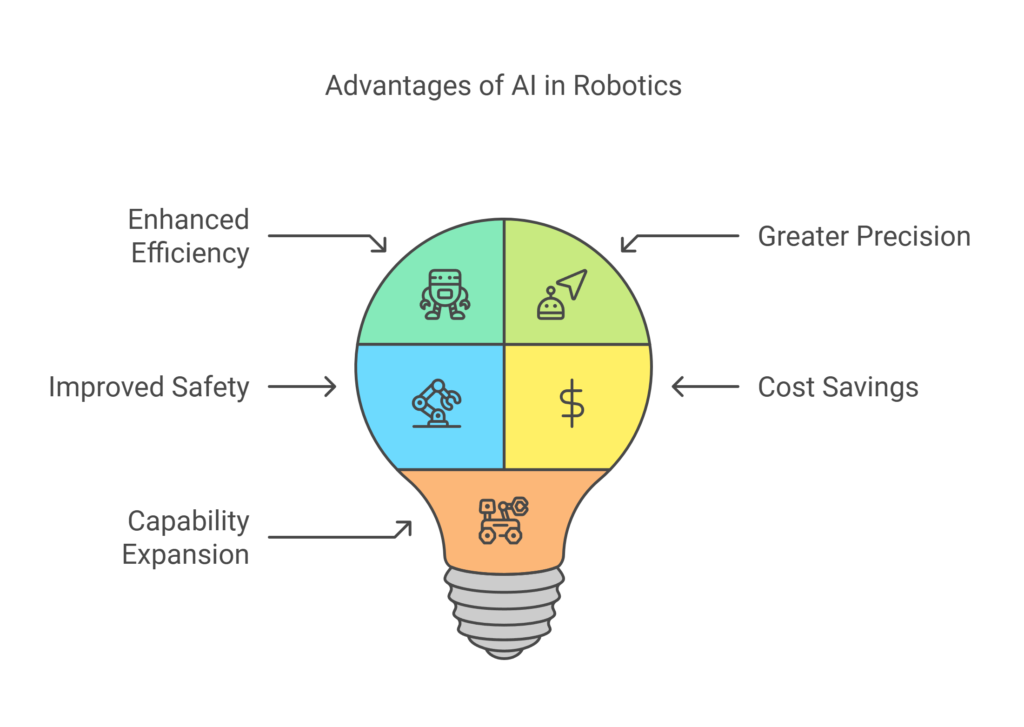
Generative AI for Software Developers Specialization
Challenges and Considerations
Despite its advantages, AI in robotics faces challenges:
Technical Challenges
- Developing reliable AI algorithms for unpredictable environments
- Managing the high energy consumption of mobile robots
Ethical and Social Concerns
- Job displacement due to automation
- Privacy risks associated with data collection
- Accountability for autonomous decisions
Implementation Hurdles
- High initial investment costs
- Training personnel to operate and maintain robots
- Integrating robots with existing systems
Future Trends in AI Robotics
The future of AI in robotics is promising:
- Advancements in Deep Learning: Enabling robots to learn more complex behaviors and adapt faster.
- Edge AI: Localized data processing for faster decision-making and reduced reliance on cloud connectivity.
- Human-Robot Collaboration: Robots working alongside humans to complement their abilities rather than replace them.
- Sustainable Robotics: Energy-efficient designs and biodegradable materials for eco-friendly robots.
Conclusion
AI is undeniably transforming robotics, empowering machines with unparalleled capabilities. While challenges remain, ongoing advancements in AI technologies will continue to shape a future where robots play an even greater role in industries and society. Whether improving healthcare outcomes, enhancing productivity, or enabling safer operations, the synergy of AI and robotics holds immense potential for innovation and growth.
Explore our blog series on AI Applications Across Industries to learn more about how this transformative technology is reshaping our world.
Dive deeper into related topics like AI in Manufacturing and The Role of Robotics in Healthcare Innovation to stay ahead of the curve!
Summary of AI in Robotics
Artificial Intelligence (AI) is revolutionizing robotics, empowering machines with the ability to learn, adapt, and execute complex tasks. Here’s a structured overview of AI’s transformative impact on robotics, its technologies, applications, and challenges:
1. Key Technologies Driving AI in Robotics
- Machine Learning (ML):
Robots use ML to learn from data and improve over time. Key techniques include:- Supervised Learning: Learning with labeled datasets.
- Unsupervised Learning: Identifying patterns in unlabeled data.
- Reinforcement Learning: Learning by trial and error to maximize rewards.
- Computer Vision:
Powered by deep learning and convolutional neural networks (CNNs), computer vision enables robots to interpret visual data for object recognition, navigation, and task execution. - Natural Language Processing (NLP):
NLP allows robots to understand and respond to human language, enhancing communication through voice commands or text interfaces. - Sensor Fusion:
Integrating data from multiple sensors (e.g., cameras, LiDAR) provides robots with a comprehensive view of their surroundings for better decision-making.
2. Components of AI-Powered Robots
- Sensors and Actuators: Sensors gather data, while actuators enable robots to interact with their environment.
- AI Algorithms and Software: Frameworks like TensorFlow and ROS serve as the “brain” of the robots, driving intelligent decision-making.
- Cloud Connectivity: Offers access to extensive computational resources and real-time updates.
- Human-Robot Interaction (HRI) Interfaces: Facilitates seamless communication, ranging from control panels to advanced multimodal systems.
3. Applications Across Industries
- Manufacturing:
- Automating assembly lines.
- Enhancing quality control.
- Enabling human-robot collaboration through cobots.
- Healthcare:
- Improving surgical precision.
- Supporting patient rehabilitation.
- Assisting in eldercare.
- Agriculture:
- Smart farming via autonomous tractors.
- Crop monitoring and precision farming techniques.
- Logistics and Warehousing:
- Automating inventory management.
- Optimizing material movement.
- Handling last-mile deliveries.
- Service Industry:
- Performing cleaning and maintenance tasks.
- Enhancing customer service experiences.
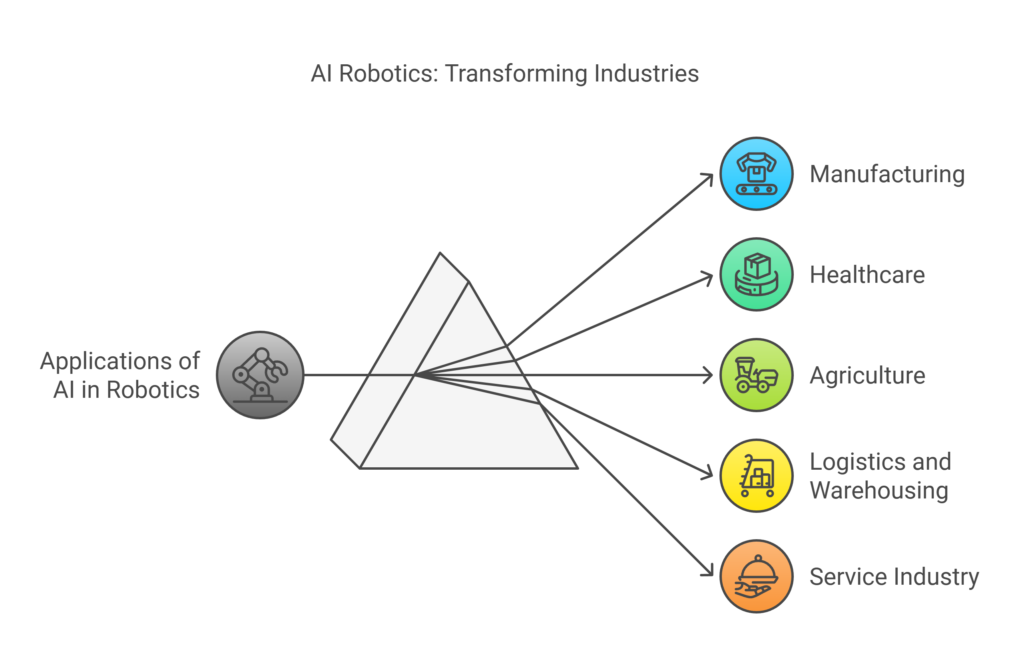
4. Benefits of AI in Robotics
- Increased productivity and efficiency.
- Enhanced accuracy in task execution.
- Improved safety, especially in hazardous environments.
- Cost reductions in operations.
- Ability to handle complex decision-making.
5. Challenges and Considerations
- Technical Challenges:
- Robust algorithm development for unpredictable environments.
- Ensuring safety in human-robot interactions.
- Managing power demands of AI systems.
- Ethical Concerns:
- Job displacement.
- Privacy and data security.
- Liability in autonomous decision-making.
- Integration Issues:
- High initial implementation costs.
- Training and maintenance challenges.
- Compatibility with existing systems.
6. Case Study: Kanerika’s AI-powered RPA
Kanerika implemented AI-powered robotic process automation (RPA) for fraud detection in insurance. The system reduced manual work, improved accuracy, and enhanced fraud identification, showcasing the potential of AI in practical applications.
7. FAQs on AI in Robotics
- What is AI in robotics?
AI equips robots with intelligence to perform complex tasks autonomously. - How is AI used in robotics?
Through technologies like ML, computer vision, and NLP, AI enhances robotics across industries. - What are the benefits of AI in robotics?
Improved efficiency, accuracy, safety, and cost-effectiveness. - What are the challenges?
Ethical concerns, technical hurdles, and integration complexities.
Relevant Links for Deep Dives
Learn from experts at Google and get in-demand AI skills you can apply to your work right away with Google AI Essentials, zero experience required.
- Machine Learning and Robotics Fundamentals
- Computer Vision in Robotics
- Natural Language Processing (NLP)
- Sensor Fusion and Navigation
- Applications Across Industries
.
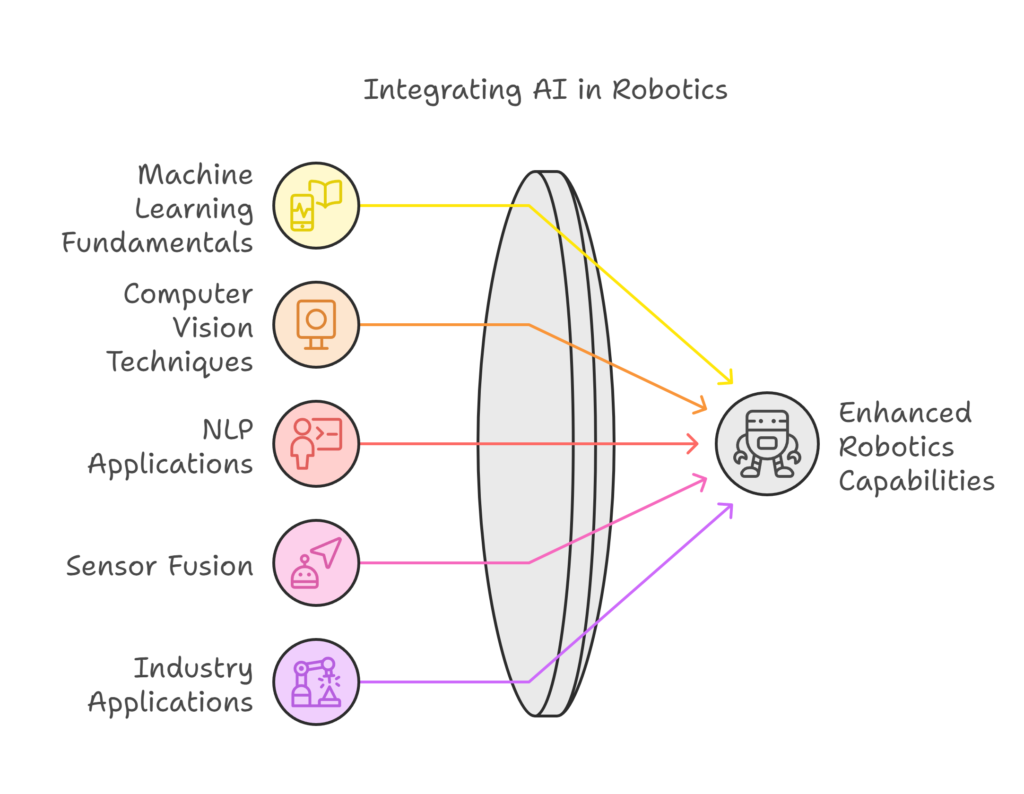
-

How Sustainability Is Becoming a Core Component of BBA Programs
How Sustainability Is Becoming a Core Component of BBA ProgramsThe Growing Importance of Sustainability in Business
In recent years, sustainability has become a buzzword in the business world. With the increasing awareness of environmental issues and social responsibility, companies are shifting their focus towards sustainable practices. As a result, BBA programs are adapting to meet the demand for environmentally conscious business leaders.
What is Sustainability in Business?
Sustainability in business refers to the practices and strategies that companies adopt to minimize their environmental impact, while also promoting social responsibility and economic growth. This includes reducing carbon emissions, conserving natural resources, and promoting fair labor practices.
The Benefits of Sustainability in BBA Programs
- Improved brand reputation: Companies that adopt sustainable practices are seen as responsible and environmentally conscious, which can improve their brand reputation and attract socially aware customers.
- Cost savings: Sustainable practices can help companies reduce their energy consumption and waste, leading to cost savings.
- Increased competitiveness: Companies that adopt sustainable practices are more likely to attract top talent and stay ahead of the competition.
- Preparation for future challenges: Sustainability education prepares students for the challenges of a rapidly changing business environment, where environmental and social issues are becoming increasingly important.
How BBA Programs are Integrating Sustainability Education
- Sustainability-focused courses: Many BBA programs now offer courses that focus specifically on sustainability, such as sustainable business practices, environmental economics, and corporate social responsibility.
- Case studies and real-world examples: BBA programs are using case studies and real-world examples to teach students about sustainable business practices and their impact on the environment and society.
- Guest lectures and industry partnerships: BBA programs are partnering with industry leaders and inviting guest lecturers to share their experiences and insights on sustainability in business.
Real-World Examples of Sustainable Business Practices
- Patagonia: Patagonia uses environmentally-friendly materials, reduces waste, and promotes fair labor practices.
- IKEA: IKEA is committed to renewable energy, waste reduction, and sustainable forestry practices.
- Unilever: Unilever has set ambitious targets to reduce its environmental impact and promote sustainable business practices.
Conclusion
Sustainability is becoming a core component of BBA programs, and for good reason. As the world shifts towards a more sustainable future, businesses need leaders who understand the importance of environmental and social responsibility. By incorporating sustainability education into BBA programs, we can equip future business leaders with the skills and knowledge they need to drive sustainable business practices.
Call to Action
If you’re interested in learning more about sustainability in BBA programs, we encourage you to explore our resources and connect with industry leaders who are making a positive impact.
Latest post:
- Nuts and Legumes: A Surprising Connection Explained (And Why It Matters to Your Diet)
- Where Do Pine Nuts Originate From? A Journey of Delicious Delicacy
- Discover the 7 Types of Tree Nuts: Unlocking Nutrition and Flavor
- India’s Electric Vehicle Revolution: A 5-Year Growth Story
- Safeguarding the Maritime Nation: Achievements of the Indian Coast Guard




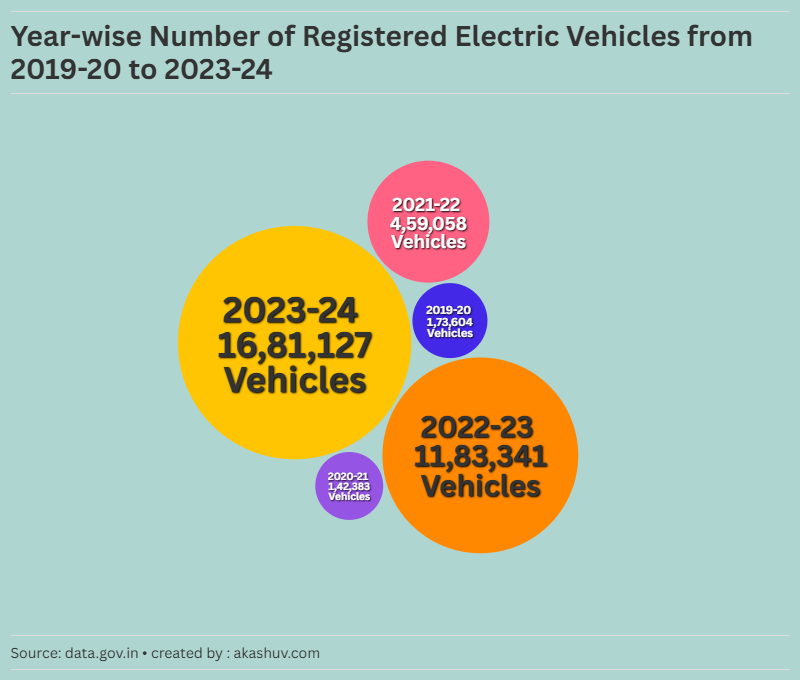
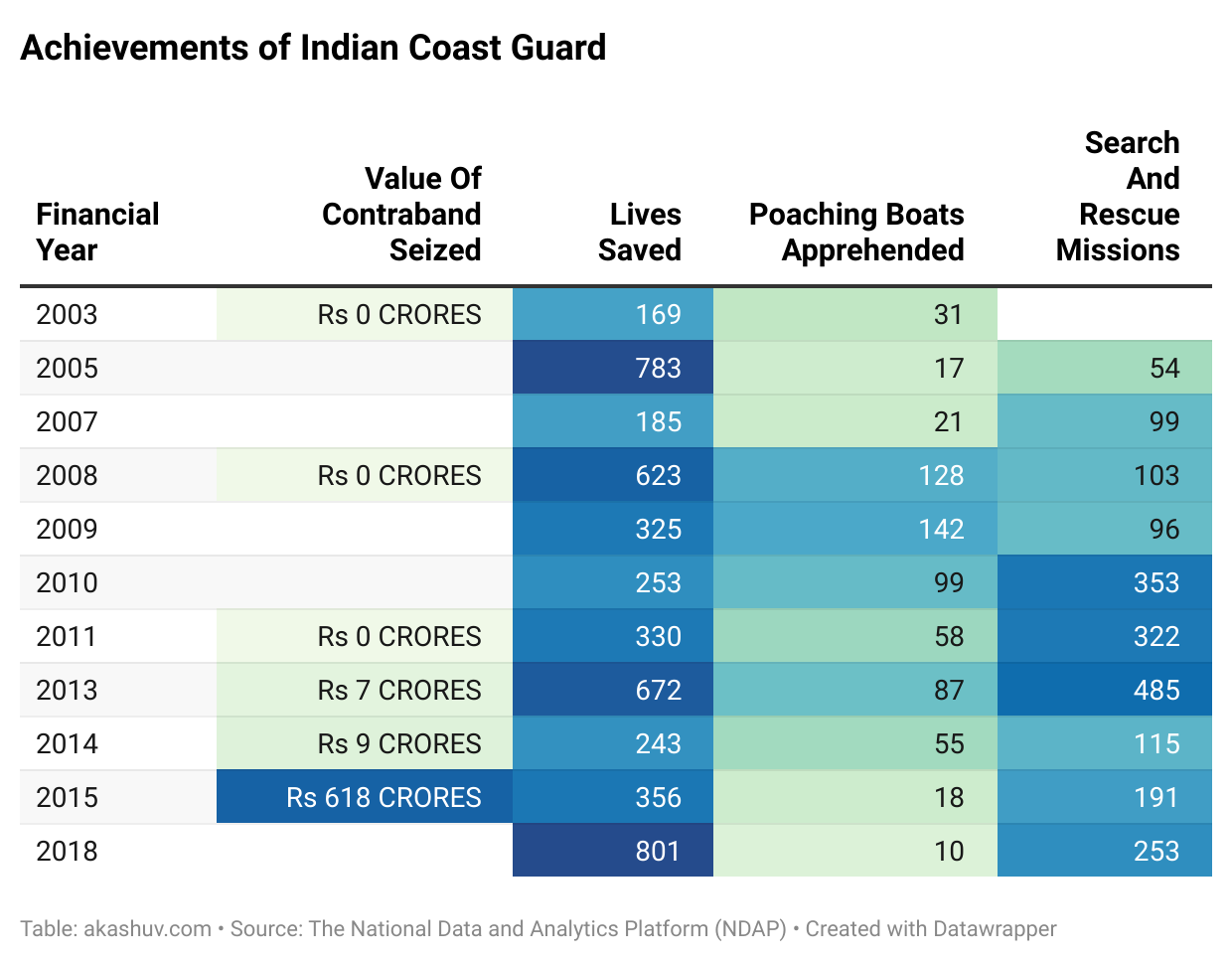





Leave a Reply